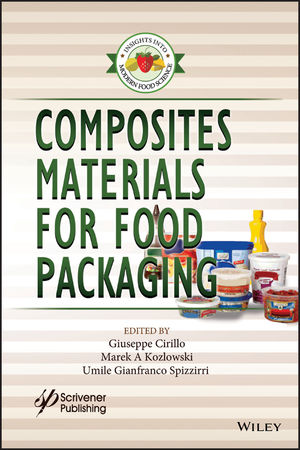Market Research
UK Food Businesses Highlight Challenges Around Labeling, Recyclability

Image courtesy of Getty Images / VLG
Ultra-processed food, staff retention, recyclability, legislative divergence and “High in Fat, Salt and Sugar” (HFSS) designations are some of the key challenges facing UK food and beverage businesses, according to members of Campden BRI.
These five topics were identified as major technical and financial challenges by Campden BRI’s Member Interest Groups (MIGs) during their annual Spring and Autumn meetings.
The MIGs raised concerns about consumer perception of ultra-processed foods, with focus on ingredients and the level of product processing.
Concerns were also raised about the lack of harmonization between EU and UK when it comes to packaging requirements (recycled packaging and recyclability of packaging), labeling requirements and recycling infrastructure. MIG members also highlighted concerns about which products will and won’t be affected by The Food Promotion and Placement regulations when they come into force in 2025.
Recruitment and retention were also discussed, along with continuing pressure for food and drink manufacturers to reduce packaging and improve the recyclability and sustainability of the packaging they use.
“MIG members are at the coalface of the food and beverage industry and have identified a range of challenges and concerns that will have major technical and financial effects on the industry in the coming year,” says Bertrand Emond of Campden BRI.
The 15 MIGs are made up of representatives from Campden BRI member companies and cover everything from microbiology, fermented and alcoholic drinks, and cereals, milling and baking, to sustainability, diet and health, and food service. The MIGs meet twice per year and provide opportunities to discuss topical industrial issues, meet with industry peers, consider the impact of emerging legislation, select and steer research projects and enjoy early access to research results and the latest insights from industry leaders.
Among the MIGs’ concerns are:
“Ultra-processed” definitions and implications
There is no universally agreed or official definition for ultra-processed foods, and there are multiple models for categorizing them. The most well-known classification is the NOVA system, which categorizes all food products into one of four groups:
- Unprocessed and minimally processed
- Processed culinary ingredients
- Processed
- Ultra-processed
As well as the media scrutiny around this subject, and its influence on consumer perceptions and desires, there is also a concern that the focus on the level of processing of products and ingredients may be at the detriment of a need to remain focused on the nutritional value of products. Information from research in this area is continuing to grow, and it will no doubt remain a hot topic for some time to come.
Recycling across the UK and EU
One of the objectives within the current Packaging and Packaging Waste Directive (European Parliament and Council Directive 94/62/EC of 20 December 1994 on packaging and packaging waste, which is retained in UK legislation) is the harmonization of measures concerning management of packaging and packaging waste. There is, however, a lack of harmonization between EU and UK, between UK devolved nations, and between EU member states when it comes to packaging requirements, labeling requirements and recycling infrastructure.
On Nov. 30, 2022, the European Commission published Proposal for a Regulation of the European Parliament and of the Council on packaging and packaging waste, amending Regulation (EU) 2019/1020 and Directive (EU) 2019/904, and repealing Directive 94/62/EC.
In terms of addressing harmonization (across the EU at least), it is a step change that the proposed new legislation is a regulation (as such, it will be mandatory across all EU Member States). As opposed to a directive, where implementing legislation (which can vary between member states in terms of how the requirements of the directive are achieved) needs to be put in place within national legislation.
Key parts of the new regulation (currently expected to be enacted by the end of 2024) are packaging waste reduction targets, reusable packaging and re-use targets, deposit return schemes, restrictions on certain packaging formats, and packaging labeling requirements regarding composition/recyclability/disposal instructions.
Recruitment and retention
Recruitment and retention issues, as well as being challenges in themselves, can also create further difficulties in relation to skills and knowledge gaps, as well as challenge the building and maturing of a positive food safety culture within a food business.
In these situations, it is as important as ever to focus on food safety and quality culture. Food business operators need to nurture a culture in which everyone will “do the right thing right” at all times, even when under pressure, ensuring that food safety and quality are non-negotiable and never compromised.
Challenges associated with reduction, recyclability and sustainability of food contact packaging
With pressure still high for food and drink manufacturers to reduce packaging and improve the recyclability and sustainability of the packaging they use, this is inevitably in careful balance with the functions that the packaging needs to deliver. Any changes need to be thought through carefully, and the impact on product quality and waste assessed.
When looking to introduce new or changed packaging, it’s important to consider the impact of any change on the packaging function and integrity, storage requirements, supply chain, stability/robustness, ease of use and handling, shelf-life (of packaging and product), cost and consumer perception.
HFSS scores and other nutrient profiling
Currently, food and drink categories affected by The Food (Promotion and Placement) (England) Regulations 2021 are listed in the legislation and include, for example, soft drinks, savory snacks, confectionery and pizza. However, not every product within each category is affected. Each is rated on an individual product level by a Nutrient Profiling Model score, which attributes negative points for calorie density, saturated fat, sugar and sodium, and positive points for protein, fiber, fruit, vegetables and nuts. Foods that score four or more and drinks that score one or more are categorized as HFSS products. The current legislation is only applicable in England, but the other devolved UK nations are in the process of developing their own rules.
The challenge highlighted by the Campden BRI MIGs relates to foods typically considered as healthy achieving a low score, and vice versa.
Looking for a reprint of this article?
From high-res PDFs to custom plaques, order your copy today!








